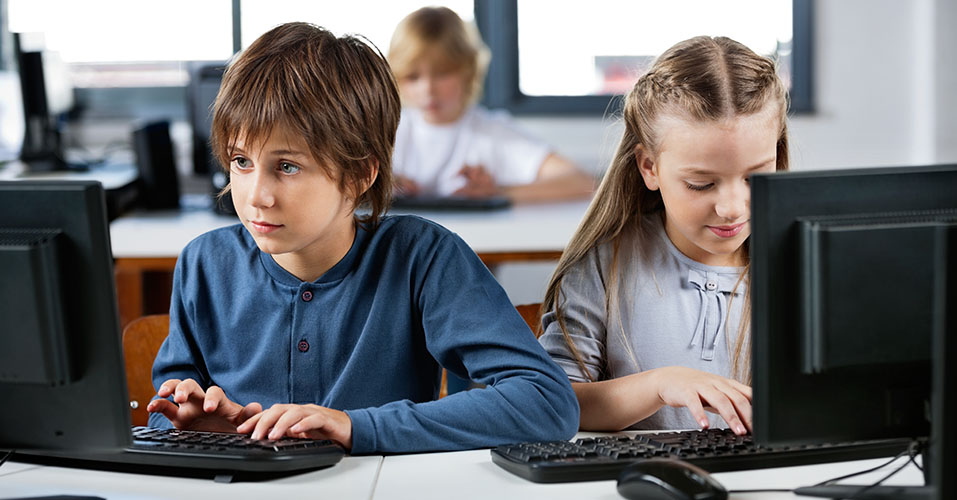Using a language lab at your educational centre creates a much more effective learning environment than traditional classroom teaching. As well as boosting students’ skills, Why use a language lab? it allows for a high degree of immersion and attention to diversity. A networked classroom encourages participation among students and the integration of different language exercises. The most effective way to learn a language is by practising it. And in a way, learning languages is comparable to learning how to swim. Theoretical knowledge is important, but without practice it is useless. That is why a language laboratory is the best solution for successful language learning.
Let’s start at the beginning by talking about what a language lab is, why use a language lab and what its main features are.
What is a language laboratory?
An interactive language laboratory, or networked classroom, makes it possible to integrate the language learning method of the teacher’s choice, facilitating the development of many different activities in the classroom, using multimedia material. This is achieved with the application of control software that serves to control the students’ computers and know what they are doing at any given moment. Networked classrooms are very complete tools for listening comprehension training, study environments, experimenting, learning how languages work, and using them through practice.
Therefore, these classrooms are set up using advanced multimedia and flexible communication technology to create local and virtual workspaces with any type of tool needed for processing language or computer learning materials.
#1. Interactive content to use in a language laboratory
A language laboratory, with its versatility to use a wide range of teaching materials, presents itself as an invaluable resource in the field of language teaching. The unstoppable advance of new educational technologies has given teachers unprecedented access to an unlimited number of media and resources, especially via the web. However, the challenge lies in selecting quality material and, more importantly, ensuring that this material is effective in the learning process.
With a language laboratory in the classroom, autonomy increases: students can go through the courses at their own pace without having to be dragged along or bored in class. In addition, they have the support of a teacher who can answer their questions at any time.
In this context, the integration of networked classrooms in a school becomes essential, as it allows students to immerse themselves in a dynamic and interactive environment with unique and highly effective multimedia materials. These networked classrooms become spaces where theory meets practice, fostering meaningful and stimulating learning. In addition, by using multimedia resources such as videos, audios and interactive activities, students can improve their listening, speaking, writing and interaction skills in real-life situations. The combination of digital tools and innovative pedagogical approaches promotes active and autonomous learning, which in turn stimulates learners’ motivation and interest in the process of mastering a new language.
#2. Teachers rely on education technology
Although a language laboratory is a great advance in the classroom, the teacher is still the protagonist. But thanks to the educational technology incorporated in networked classrooms, teachers have the tools they need to make their classes fully effective.
With a language laboratory in the classroom, autonomy increases and students can go through courses at their own pace without having to be dragged along or bored in class. In addition, they have the support of a teacher who can answer their questions at any time.
With this type of platform, not only is it good for students, but the teacher also receives real-time information on the performance of their students and can monitor them much more thoroughly with virtually no effort. The information collected from students’ courses can be organised on an individual or group basis to access all kinds of reports.
#3. Types of laboratories: language and computer laboratories
There are different types of laboratories, whether they are language or computer laboratories. So apart from this distinction, let’s look at what really differentiates them.
The first is a complete installation, equipped and configured at the brick-and-mortar language school, including all its elements such as furniture, computer network and multimedia elements. All this equipment is designed as a global system to provide a specific and perfect environment for language teaching, although generally the educational centre also makes it profitable for teaching other types of disciplines, such as computer science. Computer laboratories, on the other hand, allow any classroom with computers to be adapted to language teaching. They are usually self-installable and allow the school to reuse existing infrastructures, with a lower investment but without sacrificing functionality.
In conclusion, implementing a language laboratory in your school is the best training solution for your students to learn languages in an interactive and effective way.
You may also like:


